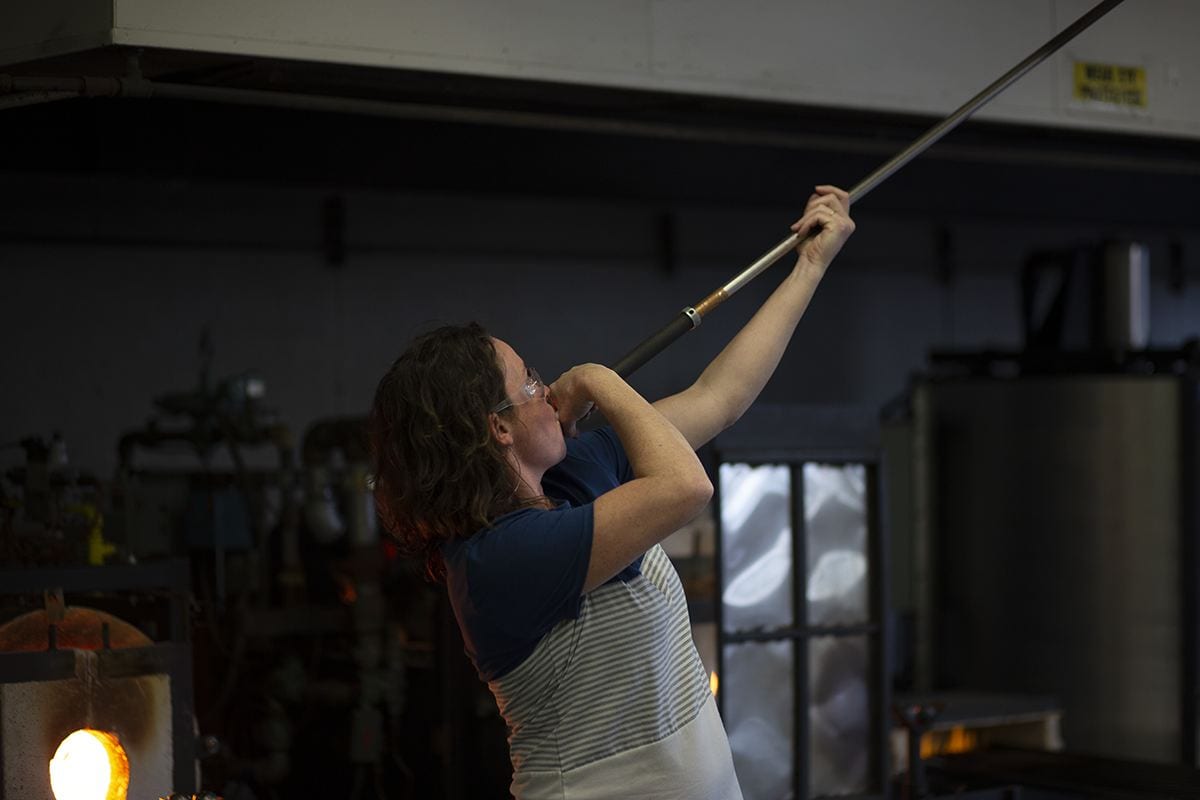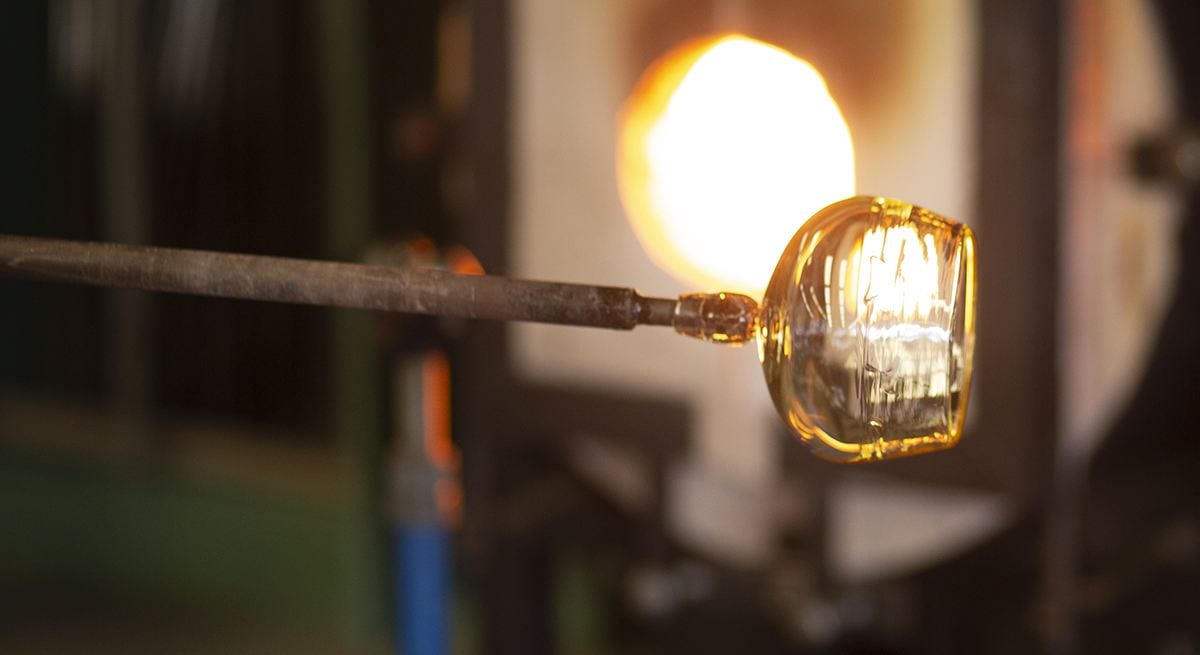On the second floor of the Industrial Studies Building at San José State University lives a very, very hot room. When the members of the Glass Program are meeting for weekly classes, it feels like summer no matter what time of the year it is. One large furnace and three smaller ovens bring artists together to create whatever masterpiece is on their agenda for the day.
 The Glass Program was established at SJSU in 1964 and was the first program of its kind to exist in the United States college system. The current Faculty Head and Studio Coordinator, Cassandra Straubing, began her position nearly 12 years ago and has spent 22 years of her life working with glass as her central medium.
The Glass Program was established at SJSU in 1964 and was the first program of its kind to exist in the United States college system. The current Faculty Head and Studio Coordinator, Cassandra Straubing, began her position nearly 12 years ago and has spent 22 years of her life working with glass as her central medium.
Glass has been bringing people together since the early 20th century when glassmaking was done in industrial factories and the work was done in teams. Factories had large furnaces for melting glass, and the pieces themselves were quite large, requiring many hands. In the 1960s, the creation of smaller furnaces and the existence of the studio art movement drew glassblowing out of factories and into small, personal studios. While many artists then and now blow glass alone, the art of glass is still very much a team effort.
“It’s really difficult to blow glass by yourself,” Straubing says, “and not as fun. I try to create a community here.” During a workshop, there are two students to a bench. One gathers the glass from the furnace and heats it up, then sits on the bench and begins to shape it. Their partner follows the open end of the pipe, blowing when instructed, and will occasionally walk around to the other side to help shape the glass with various tools. Thick stacks of wet newspaper serve as the artist’s’ “hand” and help to shape the hot glass as the artist twirls it. There are also wooden paddles, tweezer-like tools called jacks, and large shears.
 On one visit, students are busy making glass bowls. After shaping the bottom of the glass, the artist needs to transfer it to another pole. One student grabs glass on a new pole to mold onto the existing shape while the other cools down the tip with water in order to break it off of the first pole. The glass then goes back into the furnace and the two artists work together to create the opening for the finished product, using jacks to create a wide, thin mouth. Once the desired shape is created, the artists work together once more to break the finished product off of the pole. One student continues to roll the pole across their work station and add cold water to the base, while the other student squats underneath it with two large oven mitts. A game of hot potato ensues as the second student catches the bowl and rushes it to the cooling station.
On one visit, students are busy making glass bowls. After shaping the bottom of the glass, the artist needs to transfer it to another pole. One student grabs glass on a new pole to mold onto the existing shape while the other cools down the tip with water in order to break it off of the first pole. The glass then goes back into the furnace and the two artists work together to create the opening for the finished product, using jacks to create a wide, thin mouth. Once the desired shape is created, the artists work together once more to break the finished product off of the pole. One student continues to roll the pole across their work station and add cold water to the base, while the other student squats underneath it with two large oven mitts. A game of hot potato ensues as the second student catches the bowl and rushes it to the cooling station. From start to finish, Straubing and her students are intensely focused. In a shop full of dangerously hot materials and equipment, everyone is aware of each other as they maneuver around the room. When working with liquid glass, there’s no time for breaks. “Once you start,” Straubing says, “you have to finish.” Straubing likens glassmaking to a dance. “It’s addictive. . . it’s seductive.”
From start to finish, Straubing and her students are intensely focused. In a shop full of dangerously hot materials and equipment, everyone is aware of each other as they maneuver around the room. When working with liquid glass, there’s no time for breaks. “Once you start,” Straubing says, “you have to finish.” Straubing likens glassmaking to a dance. “It’s addictive. . . it’s seductive.”
The SJSU Glass Artist Guild holds bi-annual sales to help fund the program and the guild. Visit their Facebook page for more information on how to support them.

